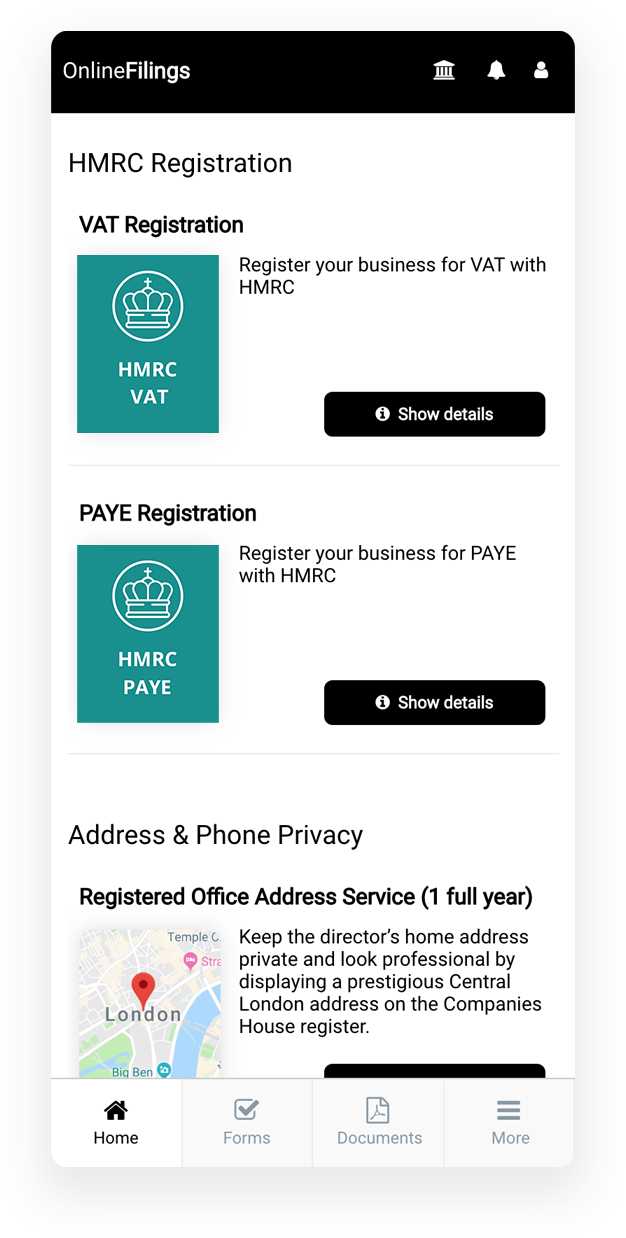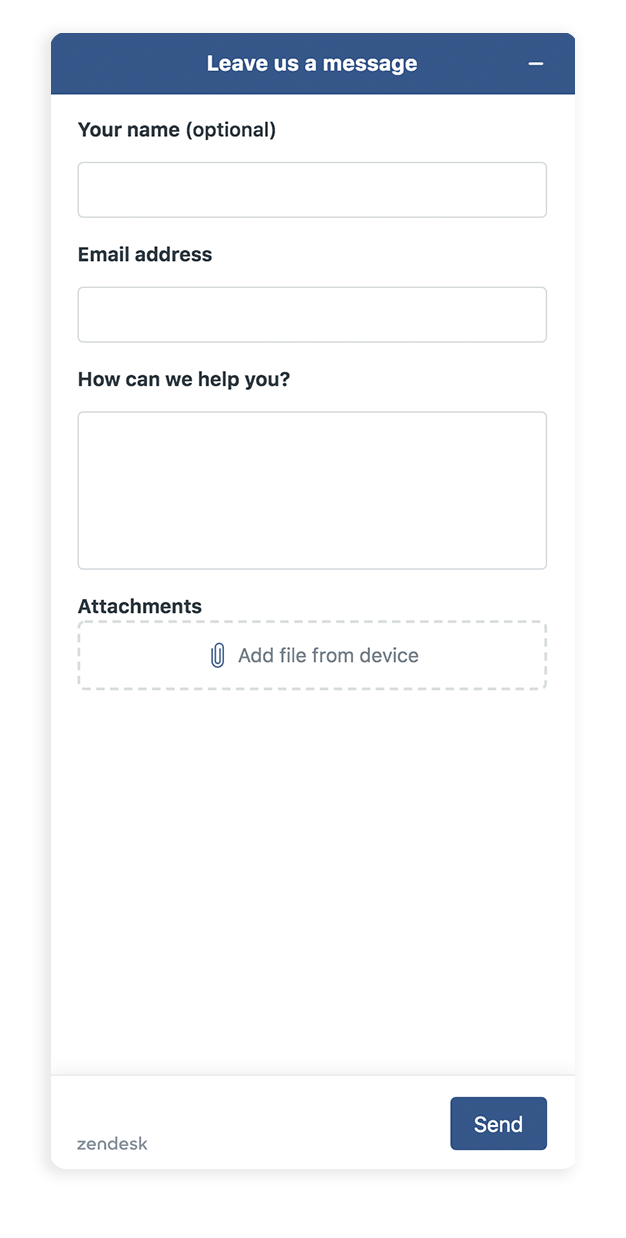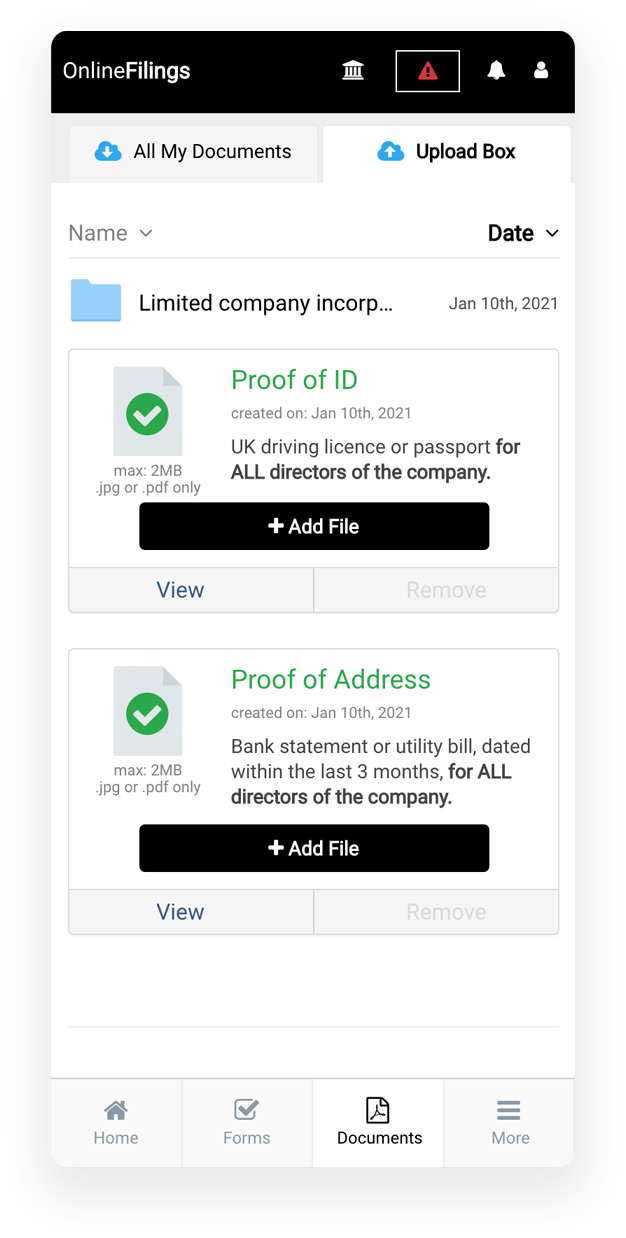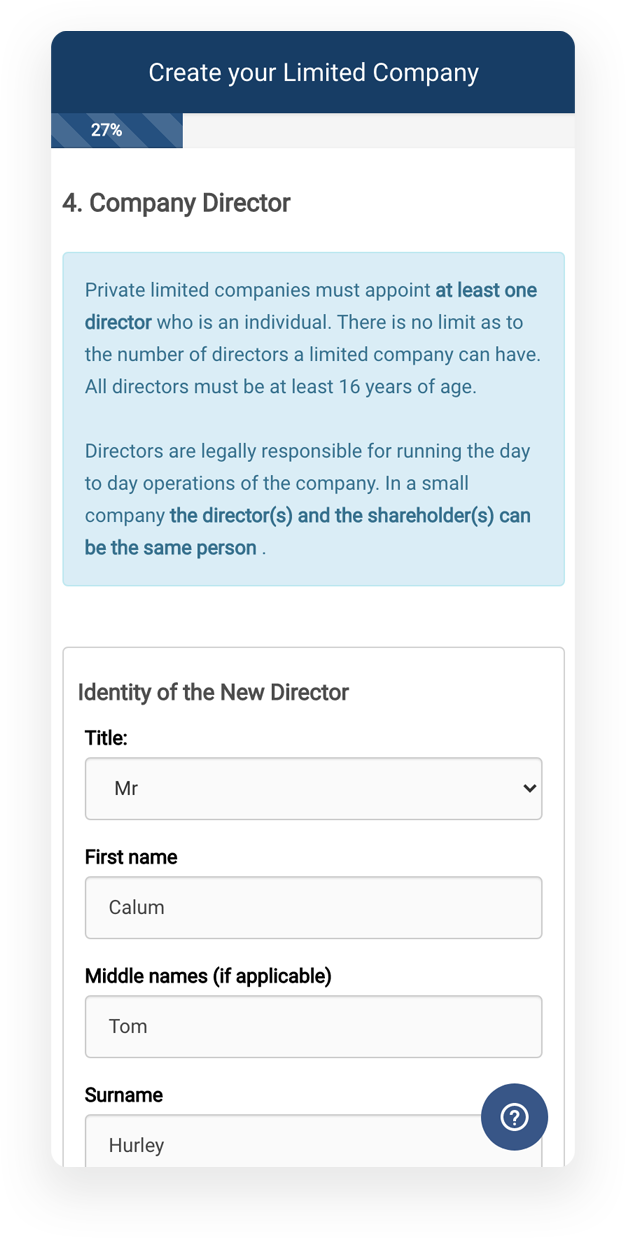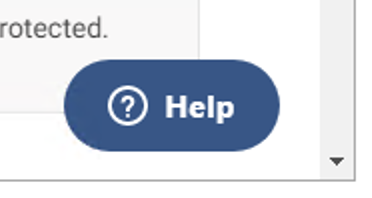 By Kaity Cornellier - 17/03/2022
By Kaity Cornellier - 17/03/2022
Table of Contents
- 1. What is VAT?
- 2. Do I need to register for VAT?
- 3. How do I register for VAT?
- 4. What are VAT Schemes?
- 5. What happens after I register?
- 6. How do I submit VAT Returns?
- 7. How does VAT work when buying or selling outside the UK?
- How Does VAT Work? The Full Guide
If you’re based in the UK or EU, chances are you’ve paid VAT (value-added tax) on certain purchases. You may know that it’s a type of tax, but how does VAT work when you run a business? How do you keep your company compliant with all VAT regulations?
If you’re in the dark about VAT, how to register, and what forms to submit, you’re not alone. Read on to discover the seven things you need to know about VAT that will set your U.K. business up for success.
Note: The purpose of this article is to provide an overview of VAT and should not be taken as advice. Every business is different so speak to an accountant to get personalised advice on what’s most tax-efficient in your unique situation.
1. What is VAT?
VAT, or value-added tax, is the consumption tax you have to pay on the goods and services you buy. These goods and services are known as ‘taxable supplies', which cover any supply made in the UK and are not VAT-exempt. Examples of these can include:
Business sales of all goods & services
- Hiring or loaning goods
- Selling business assets
- Commission
- Business goods used for personal reasons
- ‘Non-sales' like bartering, part-exchange, or gifts (either gifting your product or service for free, or exchanging your product or service with one from another company)
You pay the standard VAT rate of 20% on most supplies, with some at a reduced rate of 5% or zero-rated at 0%. VAT is already included in prices you find at a shop. Some supplies do not include any VAT, like newspapers, kids' clothing, and various grocery items.
As a business owner, you deal with VAT both in the supplies you buy and the supplies you sell to customers. There are two types: input VAT and output VAT.
What is Input VAT? This is the VAT you can reclaim on goods and services you’ve bought that are liable to VAT. Also known as input tax.
What is Output VAT? This is the VAT that registered businesses charge when selling to other businesses or customers. Also known as output tax.
If you are VAT-registered, you will need to keep track of both figures every VAT period (which is 3 months). These figures allow you to calculate the VAT you owe to HMRC or the VAT you can reclaim. You declare this on VAT Returns, which you submit at the end of every VAT period.
Example
During a VAT period, your business buys supplies worth £50,000 (excluding VAT) with a 20% VAT rate.
The Input VAT is £10,000
During the same period, you sell goods worth £120,000 (excluding VAT) with a 20% VAT rate.
The Output VAT is £24,000
When you do your VAT Return for this period, you deduct the £10,000 input VAT from the £24,000 output VAT, resulting in £14,000 VAT due to HMRC.
If ever your input VAT is higher than your output VAT, you can reclaim the difference from HMRC.
2. Do I need to register for VAT?

If your company makes over £90,000 in taxable turnover, you must register for VAT with HMRC. But what is VAT taxable turnover? The term refers to the total value of everything you sell, excluding things that are VAT-exempt or where VAT doesn’t apply.
If you have gone over the £90,000 threshold, you have 30 days to notify HMRC and register for VAT. If you’re taking over a company that should be paying VAT, you should register immediately. Not registering on time when you are over the threshold will result in paying all VAT due at once, plus possible penalty fees.
There are other reasons to register for VAT that aren’t related to the £90,000 threshold.REGISTER FOR VAT
If your taxable turnover is under £90,000
You can voluntarily register for VAT if your taxable turnover is under the threshold. In some cases, the benefits of VAT registration may be quite advantageous for your company.
When you are VAT-registered, you may be able to reclaim the input VAT you pay them when purchasing supplies. If you pay them more input tax than the output tax you receive from your customers, you can collect the difference from HMRC, saving you money.
Registering for VAT can also make a positive impression on bigger, more reputable businesses. It makes you seem like a larger operation with a higher taxable turnover, increasing your credibility in the eyes of larger businesses.
You may also win more work after registering for VAT. If you’re a business-to-business (B2B) company looking to trade with larger corporations, it may be easier to win their trust after you are VAT-registered. Some bigger companies disregard businesses that are not registered for VAT.
If you voluntarily register for VAT, you will need to keep accounts of all your sales and send VAT returns to HMRC.REGISTER FOR VATYou cannot register voluntarily if everything you sell is VAT-exempt. For example:
- Physical education & sports activities
- Betting, gaming, Bingo
- Lottery ticket sales, online lottery games & retailer commission on lottery ticket sales
- Admission to certain cultural events (ie. museums, zoos, art exhibitions, etc)
- Antiques & works of art sold for certain purposes (to settle a tax duty debt, etc)
- Charitable fundraising events
- Burial, cremation, burial at sea, or funeral plans written under contracts of insurance
There are other VAT-exempt goods as well, so do keep track of which supplies you can charge VAT on and which are exempt.
3. How do I register for VAT?
Most businesses, including sole traders and limited companies, can register online. You’ll need a few things on hand before you start.
Your company’s information:
This depends on if you’re the director of a limited company or a sole trader.
Limited company
- Director’s personal information: name, date of birth, address, phone number, National Insurance number, Tax identification number
- Limited company information: name, registration number, incorporation date, phone number, business address
Sole Trader
- Personal information: name, date of birth, National Insurance number, UTR number, phone number, personal address
VAT information: company turnover (revenue) in past 12 months, details of business activities, value of goods & services supplied and company bank details

You will also need to provide the ‘effective date of registration,' which is the date you went over the £90,000 threshold. If you are registering voluntarily, this will be the date you’ve asked to register for VAT.
The benefits of VAT registration on the Online Filings platform include access to personalised support from our team of business specialists who are standing by to assist with your specific queries.REGISTER FOR VATIt’s a good idea to consider the different VAT schemes available when you register. These schemes were designed with certain business models in mind, and they impact the amount of VAT you need to pay and/or reclaim. The majority of entrepreneurs start with the standard method scheme as it is easy to use, and most likely any accountants out there will be able to help you with your VAT returns when using this scheme. If you wish, you could move on to a new VAT scheme at a later stage when your business situation changes.
4. What are VAT Schemes?
VAT schemes are essentially different accounting methods to calculate and/or pay your VAT due. Without using a scheme, you’ll use the standard method of accounting which goes as follows:
- You keep records of your input and output tax.
- You pay VAT due to HMRC on any customer invoices you’ve sent, even if they haven't paid you. You also reclaim VAT from HMRC on supplier invoices, even if you haven’t paid them.
- If you’ve charged customers more VAT than you’ve been charged on your purchases, you pay the difference to HMRC. But, if the opposite is true, you can reclaim the difference from HMRC.
The standard method of accounting doesn’t work for everyone, so if you need a different way to manage VAT, you can register for one of the following schemes.

Flat Rate Scheme (FRS)
This scheme helps simplify VAT Returns for small businesses. It ensures that businesses pay approximately the same VAT with reduced paperwork compared to other VAT schemes. They keep the difference between the input VAT paid to HMRC and the output VAT paid by customers.
You will need to make at least £150,000 in Flat Rate turnover to be eligible for this scheme. The VAT percentage your business will use is defined by HMRC. If you do opt into this scheme, note that businesses paying a flat rate usually can't reclaim VAT on their purchases.
Annual Accounting Scheme
In this scheme, you can make advance VAT payments toward your next VAT bill. This is calculated using your last return or estimated if you’re new to VAT. You will only submit one VAT return per year instead of the usual 4 quarterly returns.
You can use this scheme in tandem with the Flat Rate scheme but not any others.
Cash Accounting Scheme
This scheme is available to businesses that have a VAT taxable turnover of £1.35 million or less. You can use this scheme to pay VAT on your sales after your customer pays you. You can reclaim VAT on your purchases once you have paid your supplier.
Margin Scheme
This scheme taxes the difference between what you paid for an item and what you sold it for, rather than the full selling price. You’ll pay a flat percentage of 16.67% (or one-sixth) of VAT on the difference.
This is available to businesses that sell second-hand goods, works of art, antiques and collector’s items. You cannot use this scheme for any items you bought for which you were charged VAT, nor can it be used if purchasing precious metals, investment gold or precious stones.
Retail Schemes
Lastly, you can use one of the Retail schemes if you’re a VAT-registered retailer that cannot account for VAT using standard accounting. There are 3 main types:
- Point of Sale Scheme: You identify and record the VAT at the time of sale.
- Apportionment Scheme: You buy goods for resale.
- Direct Calculation Scheme: You make a small proportion of sales at one VAT rate and the majority at another rate.
You can register for a VAT scheme after you’ve registered your business for VAT. In some cases, like with the Flat Rate scheme, registering right away could result in paying a lower VAT percentage for your first year. Do your research before registering for VAT to see if a scheme could be beneficial for you.
5. What happens after I register?

After you register, you’ll be sent a VAT registration certificate within 40 working days. This will tell you when to submit your first VAT return and pay any VAT you owe. It also includes your VAT number, which you’ll need to charge VAT and list VAT on invoices as well.
You will need to pay HMRC any VAT you owe from the effective date. You should also take this time to add VAT to your existing prices, notify customers of the change and reissue invoices with the updated prices.
Responsibilities
You have certain responsibilities after registering for VAT. You’ll need to make sure you charge the correct amount of VAT and that you’re paying all VAT due to HMRC. You will also need to submit quarterly VAT returns, keep VAT records and create a VAT account.
As of 1st April 2022, all businesses must follow the ‘Making Tax Digital (MTD) for VAT’ rules, which involves keeping digital records and submitting VAT returns through eligible third party software.
Record-keeping
It’s essential to keep track of important documents after you’ve registered for VAT. This means you’ll need to keep a separate VAT record (sales, purchases, VAT account, and VAT invoices) alongside your regular business records (bank statements, cash books, till rolls).
You’ll also need to start giving a VAT invoice to customers purchasing goods charged at the standard rate of 20%, the reduced rate of 5% or 0% for some zero-rated supplies outside the UK.
HMRC can visit your business to inspect your record-keeping at any time. You could be fined if your records aren’t in order, so make sure they’re organised.
What is a VAT invoice?
VAT invoices include your business’s details and VAT number along with your VAT-registered customer’s details, a description of the goods and/or services you’re supplying, and the amount before and after VAT was added. Below is an example:

VAT invoices are an important part of your record-keeping. They should be sent to all customers once they have purchase goods and/or services from you. If any VAT invoice is lost or damaged, you can ask the supplier to provide a copy and mark it as ‘duplicate’.
VAT Accounts
You will need copies of all VAT sales invoices, purchase invoices, and credit notes to create a VAT account, which is a summary of the VAT you’ve charged on your sales and any VAT you’ve paid on any purchases.
It is required by law to keep and maintain a VAT account with these documents and supporting figures. Your VAT account will also provide the information you need to complete VAT returns.
Below is an example of a VAT account for a quarterly trader:

Making Tax Digital (MTD)
Starting 1 April 2022, all companies must keep business records digitally. They must also submit VAT returns with software that is MTD-compatible. Making Tax Digital (MTD) is part of “HMRC’s ambition to become one of the most digitally advanced tax administrations in the world and make it easier for individuals and businesses to get their tax right” (HMRC, 2020).
MTD-compatible software, like this one, makes it easier to get your taxes right. You can also use this software to keep records and submit VAT returns or quarterly income tax updates to HMRC. You must keep VAT records for at least 6 years.
6. How do I submit VAT Returns?

All VAT-registered businesses need to submit VAT returns, usually every quarter (or 3 month period, also known as an ‘accounting period’). Each return includes your total sales and purchases, the amount of VAT owed, the amount you can reclaim, and your refund amount from HMRC. You can usually reclaim VAT paid on business purchases or expenses. You must keep all records to support your claim.
You must submit a return even if you don’t have any VAT to pay or reclaim. VAT returns must be submitted digitally using MTD-compatible software, like OnlineFilings. Our API-enabled software is HMRC-recognised and fully MTD-compliant. We do all the heavy lifting so you can submit VAT returns quickly, easily, and error-free.
You need to pay any VAT due by a certain deadline. You can find this deadline on your VAT online account. They’re usually the same: 1 calendar month plus 7 days after the accounting period ends.
Example
If your accounting period ends on 31 January, you have until 7 February to file your VAT return.
Once you know your deadline and have your records in order, submitting a VAT return is easy. You can make this process even simpler by submitting through OnlineFilings™ using the button below.SUBMIT VAT RETURNSIf you fail to pay by the deadline, you could incur a penalty fee (or multiple), so make sure all important dates are recorded in your diary.
7. How does VAT work when buying or selling outside the UK?

How does VAT work when your customers are in other countries? UK businesses that sell, send or transfer goods out of the UK do not usually need to charge VAT. You can zero-rate most exports from Great Britain to anywhere outside the UK, and from Northern Ireland to anywhere outside the UK and EU.
Make sure to keep evidence of the export, comply with all other conditions, and ensure that the goods are exported properly within 3 months of the sale (either the day you sent the goods to your customer or the day you received full payment from them).
Buying Goods or Services from EU
If you’ve paid VAT on goods or services bought from the EU, you may be able to claim a refund online via UK authorities. You must comply with the rules in the specific country you brought from, which differs across the EU. You may need to provide a certificate of status to get a refund.
If you are eligible, they’ll pass your claim along to authorities in the EU country you bought from. You may need to cite the standard codes of your goods or services in order to claim a refund. You may also need to use sub-codes for your goods. If the country is late refunding your VAT, you may also be able to claim interest.
VAT MOSS and Digital Services
The VAT MOSS scheme is a way of paying VAT on supplies of certain digital services. It’s designed for UK-based businesses who make supplies to customers in the EU, or businesses outside the UK and EU who make supplies to UK or EU customers (known as ‘Business to Customer' sales or ‘B2C’).
Example
You provide £200 worth of digital services to a customer based in France. The French VAT rate is 20%, so you must add £40 to your sales invoice. The total invoice amount is £240, and that £40 would be included in your VAT MOSS return. HMRC would then pay that £40 to the French tax authorities. The sale would not have any UK VAT implications.
As of 1 January 2021, VAT MOSS is no longer available for use for sales in the UK.
EC Sales Lists
An EC Sales List includes the details of each EU customer, the GBP value of your sales to them, and the customer’s country code. If you’re a VAT-registered UK business that supplies goods or services to VAT-registered customers in the EU, you’ll need to use an EC Sales List to tell HMRC about your sales to EU customers.
How often you submit an EC Sales List depends on what your business supplies and its value.
How Does VAT Work? The Full Guide
In conclusion, if you’re a business in the UK with a taxable turnover of £90,000 or more, you should register for VAT. You may also apply if you’re trading outside the UK or if you’re under the £90,000 threshold and want to voluntarily register.
Ready to get started? Choose OnlineFilings™ and benefit from a simplified 5-minute registration that is fully HMRC-authorised and minimises any potential errors in your application. You’ll be completely set up in 24 hours.REGISTER FOR VATOnce you’ve registered, you’ll need to submit quarterly VAT returns. Submit with OnlineFilings™ using a simplified, HMRC-authorised process and view your fully-digitised documents in a range of formats (.xlsx, .xls, .csv, and more).SUBMIT VAT RETURNS
 By Kaity Cornellier - 17/03/2022
By Kaity Cornellier - 17/03/2022

